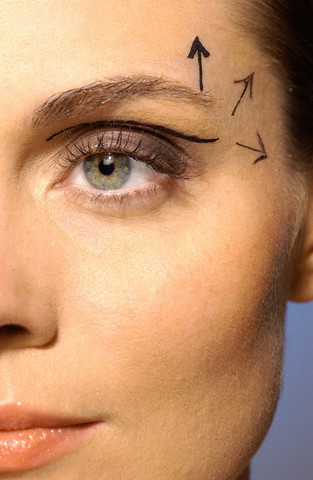 Eyes: They are the focal point (no pun intended) of your face. You can dress them up with makeup, but if you have serious cosmetic problems in your eye region, you probably look older than you should! Dr. Michelle Yagoda sees all different types of patients who would like to look younger and more refreshed, and, oftentimes, it is all in the eyes! Eyelifts provide permanent and natural solutions to various eye problems and concerns. Think about getting a blepharoplasty – or eye lift – if you…
Eyes: They are the focal point (no pun intended) of your face. You can dress them up with makeup, but if you have serious cosmetic problems in your eye region, you probably look older than you should! Dr. Michelle Yagoda sees all different types of patients who would like to look younger and more refreshed, and, oftentimes, it is all in the eyes! Eyelifts provide permanent and natural solutions to various eye problems and concerns. Think about getting a blepharoplasty – or eye lift – if you…
- Want to get rid of bulging fat bags. Dr. Yagoda’s signature Tr-EYE-umph! non-surgical eye lift can temporarily remove fat bags that accumulate under the eyes, but only a surgical blepharoplasty will provide permanent results. Thickened skin and “bags” (pockets of fat) are some of the most common complaints for women in their 30s and 40s. With the tiniest of incisions, the bags will be gone!
- Want to tighten your lower lid area and correct tear flow. If you have tear trough depression and a hollow look under your eyes, consider fixing it with non-surgical blepharoplasty. Fillers can be used to eliminate the hollows under the eyes and plump up the tear troughs. Not only will you look refreshed, but volume will be restored in the space between the lower eyelid bags and the upper cheeks, providing symmetry.
- Improve your vision. Advancing years often bring reading glasses, uncomfortable dry eyes, and more serious concerns, such as an increased risk of glaucoma, cataracts, and age-related macular degeneration that can make even everyday tasks such as reading and driving next to impossible. Dr. Yagoda will help you decide if your vision can be improved through an eyelift procedure and, if so, what the best one is for you. Eyelifts not only address cosmetic concerns, but they can improve eye health, too.
- 4. Improve your overall appearance. It is a well-known fact that the eyes are the first thing most people notice about each other. If you are not happy with how your eyes, eyelids, or under eyes look, you might feel less confident in your daily life. Restore your confidence with a surgical or non-surgical blepharoplasty!
- Want to have a double eyelid. After spending time at the prestigious Otsuka Academy in Tokyo, Japan to operate with the late, expert surgeon Dr. Hidetada Ishii, Dr. Yagoda has perfected the incisionless Asian double eyelid surgery. Hidden, permanent sutures are used to create the upper eyelid crease that many Asian patients desire, and the entire operation is done under local anesthesia in Dr. Yagoda’s office.
- Want to repair skin cancer defects. If you had or have skin cancer around the eye area, any residual defects should be fixed by an expert plastic surgeon. Dr. Yagoda will help determine which surgery is right for you.
- Eliminate dark circles. Part of the difficulty in treating dark circles is figuring out their cause! It could be genetics, lifestyle, allergies, sinus problems, or just a good old lack of sleep. Dark circles make people look much more tired (and older) than they really are, and they are very hard to cover up. Both surgical and non-surgical blepharoplasties are options: In the former, surgical eyelid surgery will provide permanent, rejuvenating results, and, in the latter, Dr. Yagoda uses filler to plump up the circles without any downtime.
- Want to stay competitive in the workplace. Although this one could be used when talking about any cosmetic surgery, it is especially true for the eyes! Since your eyes are the most important features of your face – and they are what your coworkers and bosses see when they look at you – it is important to feel confident with your eyes and eyelids. If you don’t, that lack of confidence might transfer over to your day-to-day life!






























 ASK DR. YAGODA
ASK DR. YAGODA ASK DOCTOR YAGODA
ASK DOCTOR YAGODA